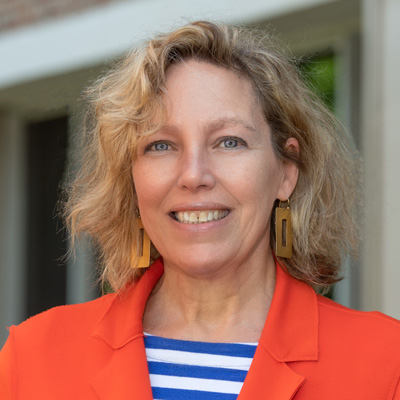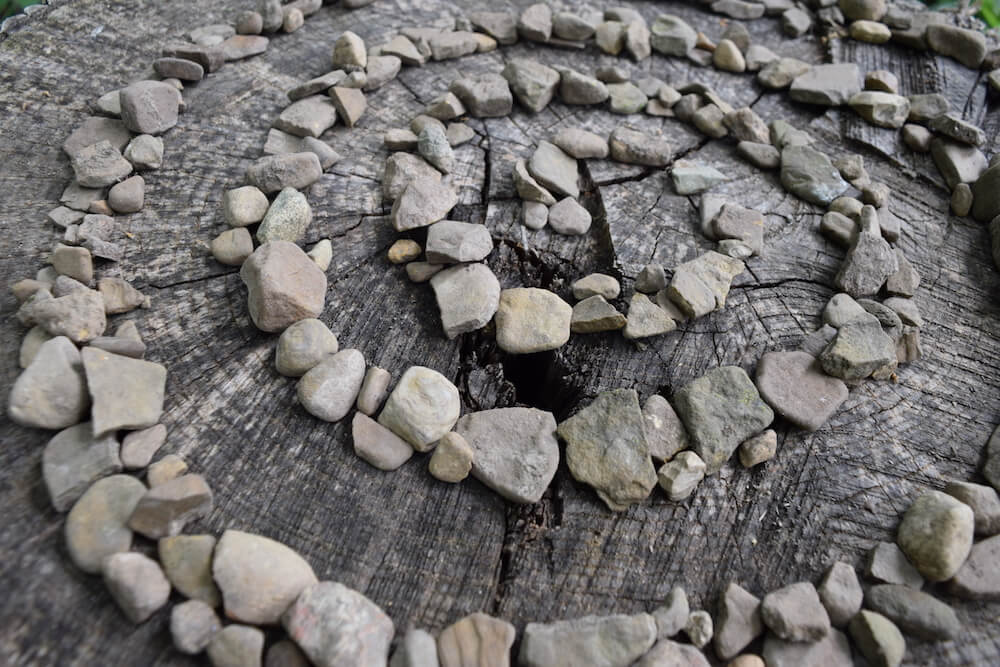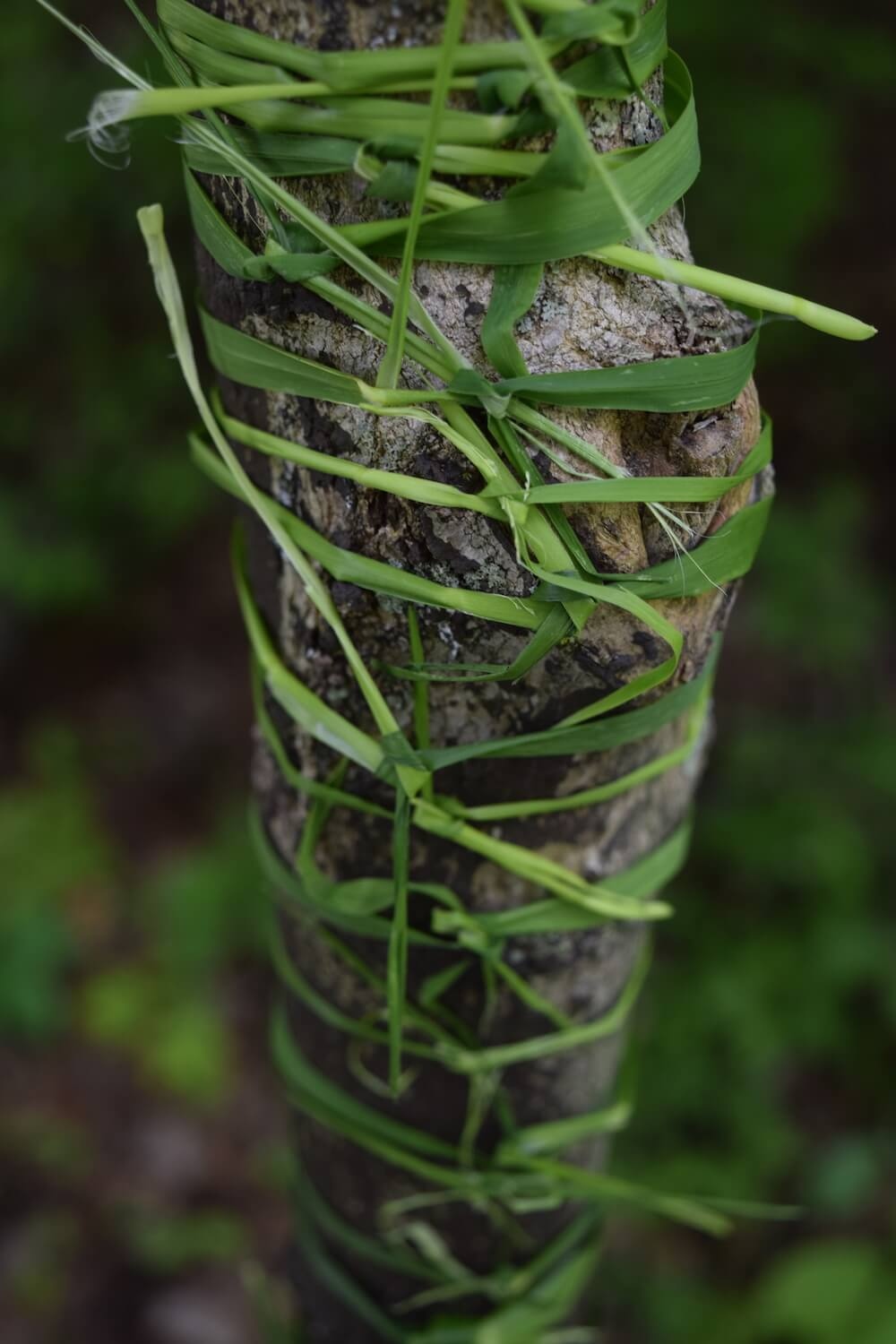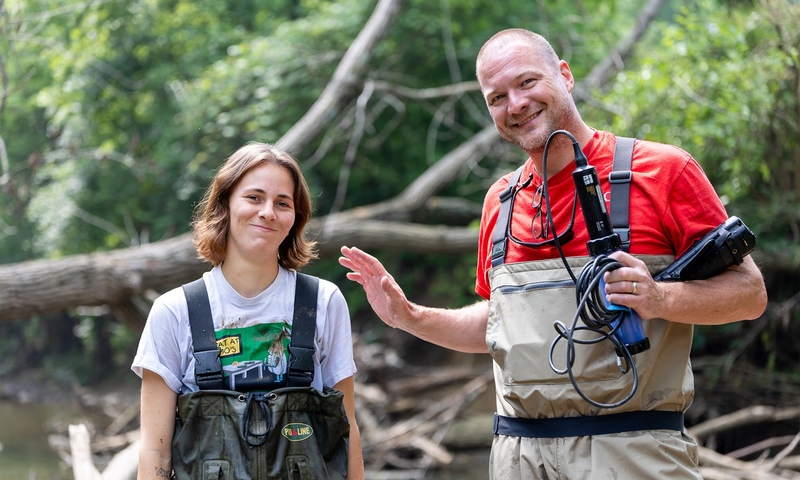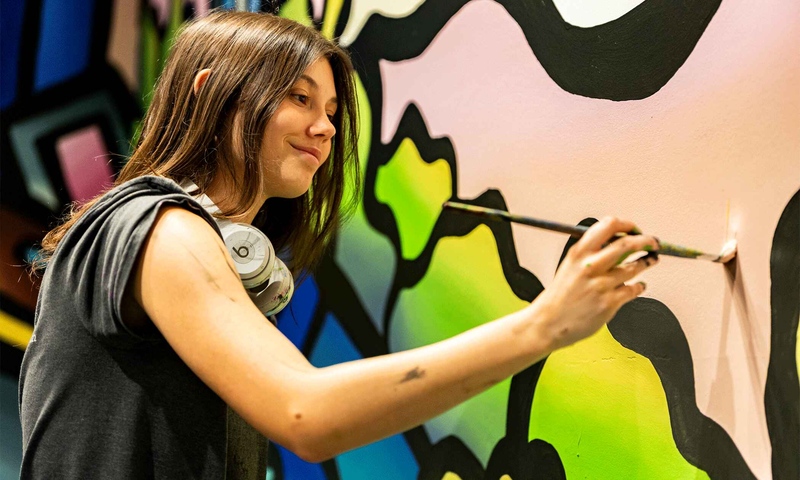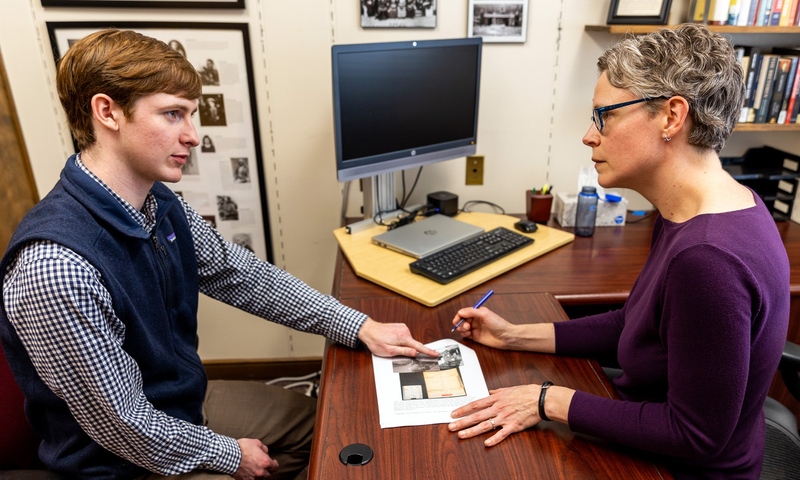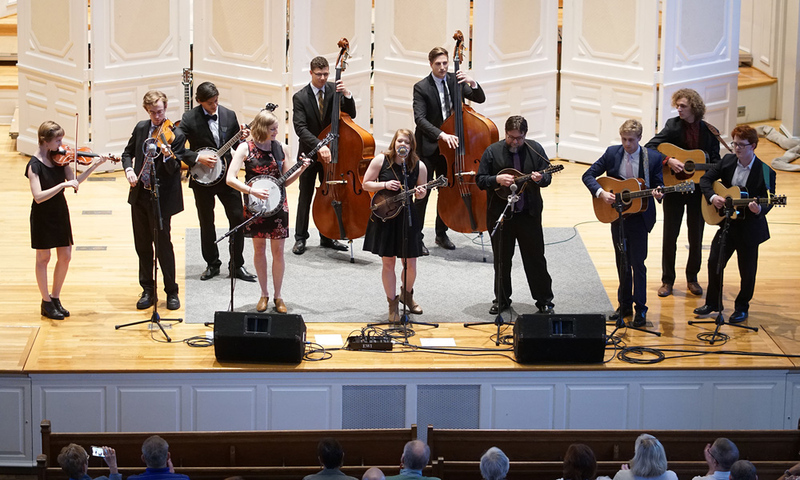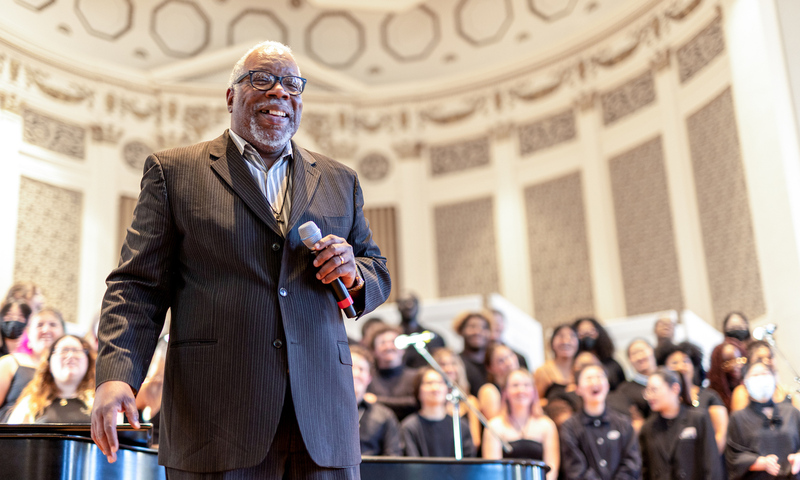Evelyn Kendix ’19 is not building things to last – and that’s exactly the point. In the summer of 2016, the studio art and environmental studies double major immersed herself in a research project designed to test the boundary between art and nature.
Kendix’s work, titled “Art in the Environment: A Study of Transient Sculpture,” explored the “land art” style, wherein art is interconnected to its landscape. Using the Denison campus, particularly the Biological Reserve, Kendix experimented with the forms and themes of five renowned land artists and discovered her own unique voice.
Kendix’s artwork is designed to reflect what she calls the “unpredictable and ephemeral” qualities of nature. Simply put, her art is made to only last a few months, a few weeks, and sometimes, only a few days.
As nature decayed and transformed, Kendix used photography to capture how her art changed, deteriorated and became part of the landscape: “It is strangely satisfying to purposely make art that isn’t supposed to be in a museum or last for eternity. This is about the here and now.”
Evelyn Kendix '19 took advantage of Denison’s Bio Reserve to create lasting images of transitory art.
Her research experimented with different materials and mediums not familiar to most burgeoning artists. Much of her art involved natural objects – leaves, rocks, fallen branches – and the terrain of the Bio Reserve to create delicate structures or cast fleeting shadows at the right time of day.
The different materials, according to Kendix, are intended to “create vastly different moods.” For example, in her “healing art,” Kendix strategically placed grass-stitched ties around a battered birch tree, almost like a plaster cast for the tree, to symbolize the healing aspects of nature and instill a sense of care and protection in viewers of the piece.
After taking the Farmscape class, an Environmental Studies class with a heavy emphasis on arts-based research, Kendix was inspired to try this new art form: “It got me thinking outside of one way of thinking and to begin creating things for the momentary beauty of it.”
Studio Art Professor Michaela Vivero has seen this project grow. “Evelyn came to this project wanting to fuse her interested in the environment, with the development of an artistic language.”
Her other advisor on the project, Professor Abram Kaplan of the Department of Environmental Studies, assisted Kendix as she spent “innumerable hours engaged in the process of observation, investigation and response through her own artistic gestures.”
Her hard work paid off: “You can imagine a project in your head, but be boggled by how much it morphs and develops by itself when you actually start using your hands,” says Kendix.
Her research will be presented as a portfolio in a gallery show in the 2016-2017 academic year, and she hopes to work more with sculptural artwork, which has become her favorite medium.
“Land art is such a broad field,” she says, “but figuring out what type of mediums I love to work with is the first step.”
In the future, Kendix plans to work with sustainable architecture. She used this summer scholar opportunity as a way to get her foot in the door: “While architecture will always be about the lines and angles, sustainable architecture asks how it is made, not how long it will last. A small structure in the Bio Reserve is the same thing, just on a smaller scale.”
